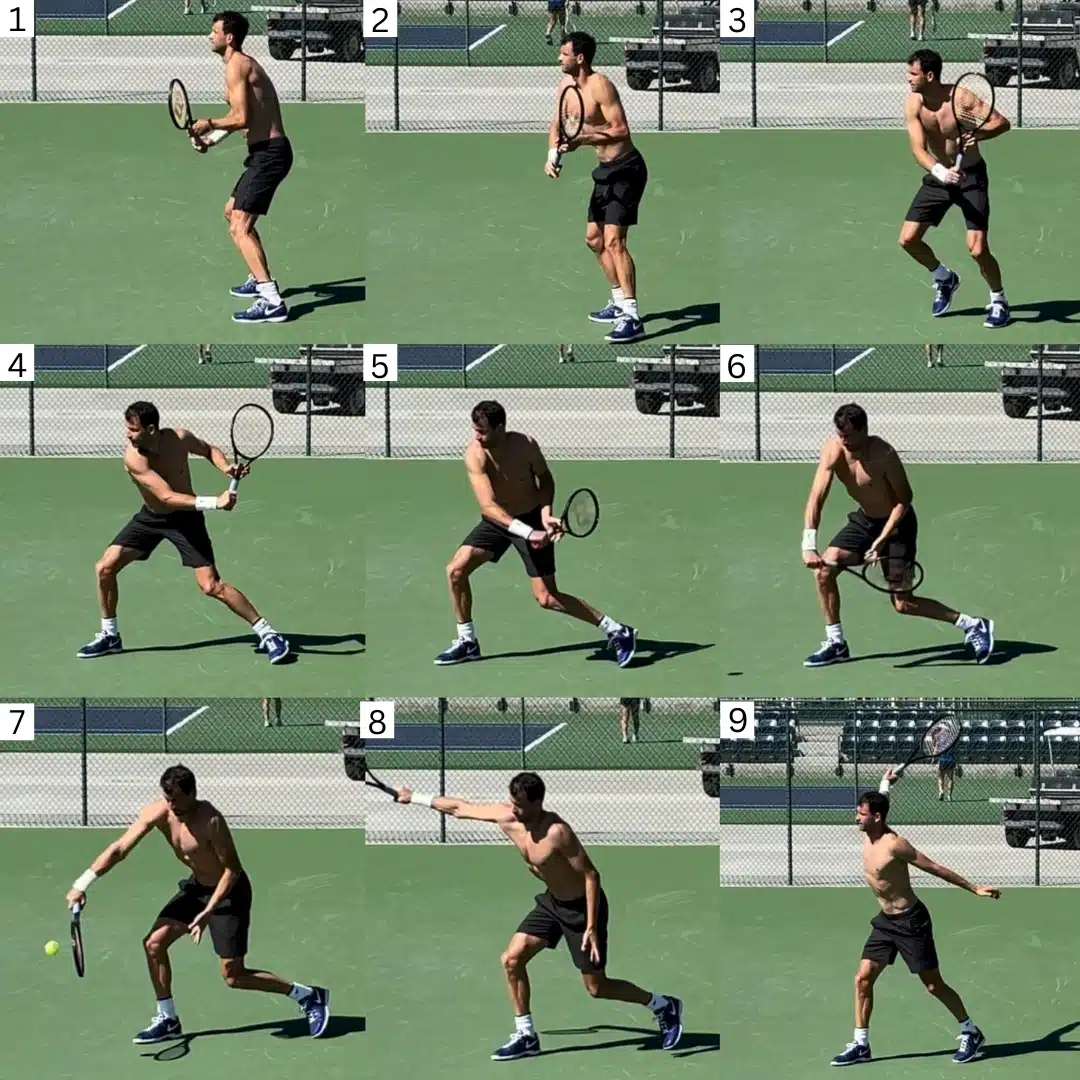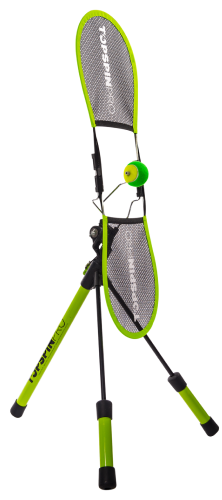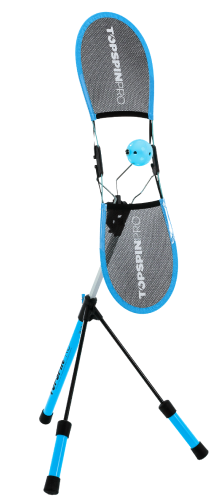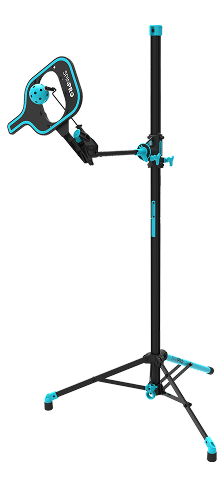 Photo: pixabay.com
Photo: pixabay.com
What we'll cover in this article:
Stay in the loop!
Want to be updated when we publish? Be sure to sign up for our newsletter. No spam, we promise!
One-Handed Backhand Grip
As I always like to emphasize, there is no right or wrong way to hold the racket (in terms of actual backhand grips). The best players in the world use a variety of grips for their one-handed backhand. But, most sit somewhere between an Eastern and a Semi-Western grip. Each grip is going to offer you different benefits depending on your height, the surface you play on and your game style. Here’s a great image from topstennistraining.com showing the main grips:
Here are the main benefits of each grip and what each brings to your game:
Continental Backhand - Great for low balls, fast change to other shots, flat style of play.
Eastern Backhand - Great for power, adding topspin and faster aggressive game style.
Semi-Western Backhand - Great for high bouncing surface, heavy topspin and baseline aggression.
One-Handed Backhand Technique
Ready Position to Grip Shift
(Image 1 and 2)
Once you are in your ready position and your brain computes that the next shot is a backhand you want to be quickly shifting your grip ready for the backswing. You can see Denis Shapovalov’s grip changes from image 1 to image 2. Here he is between the ready position and initial unit turn. If you are more of a beginner and can’t shift into your grip without looking at your hand, practice some shifts with shadow swings at home. The goal here is able to shift without looking, but ultimately, for the whole process to happen subconsciously. A little bit like driving a car, you don’t have to think about it most of the time, your body just knows what to do!

Unit Turn
(Image 3 and 4)
If you look at Denis Shapovalov in images 3 and 4 you can see the use of his non-dominant hand pulling the racket back. This has a few important uses.
- Distributes the weight of the racket evenly between his two arms - This helps with balance and saves energy in his hitting arm.
- Turns the arms, torso and racket together as a unit - By keeping his non-dominant hand on, his chest turns through with racket and arm. This will enable him to rotate it back through on the forward swing, maximizing his power.
- Lifts the racket high - You can see Denis lift the tip of the racket to the sky. This creates a higher initial backswing before the racket drop phase. Also known as a loop or a C takeback. The benefit of this is extra momentum through the ball and, even more importantly, the ability to adapt to different height bounces. By taking the racket back high to begin with you can get a good contact point on high balls or by dropping the racket to any position and height ball down the racket drop section.
Racket Drop and Forward Swing
(Image 4 and 5)
You can see in the image that Denis is hitting a low thigh height ball which is in a comfortable position. Most balls you hit on the tennis court will be somewhere in the mid height range so will require you to drop you racket below the ball to generate some lift, topspin and power. Once you get comfortable with a consistent racket drop on this type of ball, practice higher and lower balls which require less drop and more drop accordingly. Your non dominant hand will let go at this point. The weight of the racket falling helps generate momentum along with the acceleration of both the body and arm pulling the racket as it begins to turn towards the ball.
Contact Point
(Image 7)
Your contact point should be out in front of your body at almost an arm length. This will differ slightly depending on the height and position of the ball. Ultimately, on most backhands you are looking to step into the ball as you come forward to that contact point. This will help with striking the ball in front as well utilizing the bodyweight transfer for added power. You can see that Denis has his weight shifting forward toward the ball from picture number 3, then through the ball at contact and all the way to the finish position in picture number 9. At contact point, if your racket has dropped enough, the strings should be firing up the back of the ball to generate topspin on your shot. This upward swing should continue all the way through to the finish.
Finish Position
(Image 8 and 9)
At the finish position your racket should travel across the body and finish above head height. See image 9. You should have enough length of swing to stretch your chest plus letting your racket comfortably travel without you having to decelerate the swing. Sometimes staying this loose can inhibit some amature players. Ryan describes this a little more in the video below. You can also see in picture number 9 the Denis’s front leg is also fairly straight at the finish, his chest has also turned back through the ball to face the court again. the helps add power to the ball. Most of your body weight should be on that front leg at this point. This stretched chest and leg finish will add extra height and weight through the shot.
Here’s a right handed version showing Grigor Dimitrov with the same phases of the swing:

Here’s Ryan at 2minutetennis.net giving a demo of how to hit your one hander and practice on the TopspinPro:

Tennis Topspin Training Aid
- 2 mins per day
- Practice anywhere
- Rapid results
Visualization
The best way to learn anything is to watch the best in the world in action. There’s a reason they are the best and unless you have an image in your head of what you are trying to achieve it’s virtually impossible to build the correct muscle memory. When children imitate their sporting idols on the court or field, this is actually an incredible part of their development as athletes. They are locking in the key components of what makes good technique. If you don’t already have a tennis idol yourself, I suggest watching the poet himself in action. Here is Roger Federer’s backhand in slow motion:
One-Handed Backhand Common Mistakes
1.Ready Position to Grip Shift Phase
Late Grip Shift - It’s common to shift late towards the end of the backswing as your focus is on moving to the ball. The grip shift should happen either while you are in the ready position or at the very beginning of the unit turn. Tip: Practice being in the ready position and shifting before doing a shadow swing.
2.Unit Turn Phase
No Rotation - The two hander is much easier when it comes to working the body and racket as a unit. With having two hands on, you have no choice but to turn your shoulders as you swing. With the one -handed backhand, however, it’s common for players to simply isolate the arm, stay sideways as they hit and not turn the body at all. Tip: Practice shadow swings at home or on the TopspinPro to build up the muscle memory of turning the upper body, arm and racket as a unit.
No Use Of The Non-Dominant Hand On The Take Back - Many single handed players let go at the ready position and take the racket back with one hand. This commonly leads to less unit turn and power as well as over use of the shoulder (causing injuries). Tip: Try shadow swings turning as a unit on the backswing.
3.Racket Drop and Forward Swing Phase
Arm Tightness - Arm tightness is one of the most common problems with adult players. However, it becomes very apparent in the racket drop phase. Tightness will provent the racket from dropping below the ball correctly and you will end up either slapping the ball or hitting the ball down into the net. Tip: Practice loose swings with only two or three fingers on the grip.
4.Contact Point Phase
Opening the racket face - Usually paired with or as a result of leaning back. Opening the racket face up at contact is going to send that ball way long. Tip: Focus on striking the back of the ball at contact and not the underside. Keep your head down and don't throw it back as your swing up.
5.Finish Position Phase
Finishing above/behind the head - This is very common with players who are trying to add topspin to the ball. An exaggerated swing path travels straight up and the racket finishes above or drops directly behind the head. Even though we want to finish with our racket up high we are looking for the racket to also finish across to the side so we have used the body as a unit. Finishing above/behind the head is usually an arm only shot. Tip: Watch yourself either in the mirror or on a video to check your finish position.
Incorrect Arm Placement on the finish - Incorrect non-dominant hand placement can lead to being off balance through the entire shot. This often occurs because of the wrong racket swing shape and the need to push the arm out in front of the body for balance. Tip: Practice balanced shadow swings with the arm finishing behind to help. The goal is to stay still for 2 seconds at the end of the swing.
TOPSPINPRO BEGINNER BACKHAND COURSE: AN EXQUISITE ONE HANDER IN 21 DAYS
If you want to get a little more guidance with your one handed backhand you can check out our online course here.
Summary
There are pros and cons to both the one and two handed backhand. If you are unsure of which one would be best for you, have a look at this article: Single vs Double Handed Backhand: Which Is Best? The one handed backhand is arguably one of the best looking shots in tennis and also one of the most fun to hit!
One of the best ways to analyze your own backhand is to take a video. That way you can pause it and scroll through frame by frame. Try checking for some of these common mistakes and look at your technique.
Let us know in the comments below what you think one the one-handed backhand and if any of these tips have helped you.

Tennis Topspin Training Aid
- 2 mins per day
- Practice anywhere
- Rapid results
FAQs
-
What are the main types of grips for a one-handed backhand and their benefits?
The main grips are the Continental, Eastern, and Semi-Western backhands. The Continental is great for low balls and fast transitions. The Eastern is ideal for power and topspin, while the Semi-Western excels on high bouncing surfaces with heavy topspin.
-
How important is the grip shift in a one-handed backhand?
The grip shift is crucial as it sets you up for the backswing. It should ideally happen while in the ready position or at the very beginning of the unit turn. Practicing grip shifts without looking can help make this process subconscious.
-
Why is the unit turn important in a one-handed backhand?
The unit turn helps distribute the racket’s weight evenly, turning the torso and arms together for maximum power, and lifting the racket high for adaptability. This ensures a balanced, powerful swing and better handling of different ball heights.
-
What are some common mistakes in the contact point phase of a one-handed backhand?
Common mistakes include opening the racket face, which can lead to hitting the ball long, and leaning back, which affects balance. Focus on striking the back of the ball and keeping your head down to maintain proper form.
-
How can video analysis help improve your one-handed backhand?
Video analysis allows you to pause and review your technique frame by frame. This helps identify common mistakes and areas for improvement, making it easier to correct your form and enhance your backhand.
Links Related to This Article
Enjoyed this article?
Be sure to sign up for our newsletter and we'll keep you up to date about new posts





1 comment
Sadly I have to stick with the 2-hander as I am not strong enough for the 1-hander but I could watch that video of Roger all day! They also seem to get a lot more topspin with the 1-hander.